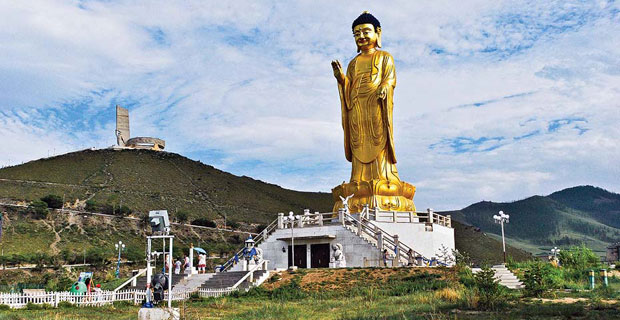Buddhist Impacts on Culture and Civilization of Mongolia
The other day I happened to be invited to the second Edition of the Bodh Gaya Global ...
The ancient Indian culture and arts spread through its Dharma. Based on these and other records, we can say that our ancestors were adopting the Buddh Dharma from India through Sogdian and Uyghur panditas at ancient time.
There are archeological evidences to prove the earliest spread of Buddhism in Mongolia. For instance, a Buddha’s statue found in the tomb of a Uyghur nobleman is directly related to the time of Uyghur Empire (IX-X century) in Tsagaan–Ovoo soum of Dornod province.
Kavyadarsha by Dandin (a Mirror of Poetry) is ancient systematic methodology of poetry in Sanskrit, which composed in the VII century in India. As we all aware Kavyadarsha in oriental literature plays an important role like Aristotle’s “Poetics” in the Western world. This Indian theory of poetry was translated into Mongolian language like Pali, and Tibetan. Learned lama Gelegjaltsan translated this theory from Tibetan into Mongolian in the XVIII century and other lamas wrote commentaries in Sanskrit language.
Since the XIII century Mongolian emperors invited the Tibetan masters and assigned them as “Imperial” and “State Guru” for enlightening the commoners with Buddh Dharma. Chinggis khan exempted Buddhist monasteries from various taxes. Ogedei khan established a Buddhist monastery in the capital of then Mongolian Empire. Guyug khan, Godun khan, Mongke khan and Kublai khan greatly spread the Buddh Dharma at their respective time. That times of Khaisan Khuleg khan and Buyan khan Buddhist sutras such as “Pancha Ragsha Sutra”, “Saddharmapundarika Sutra” and “Arya Manju Shiri Nama Samgiri” and “Bodhicaryavartara” were translated into the Mongolian language and Kangyur was casted in gold.











Comments.